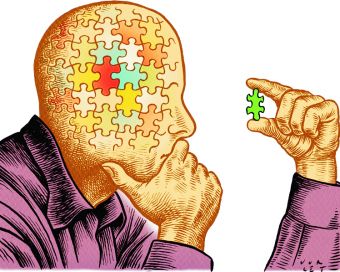
In Latin that spells “nothing is without reason.” We often say “everything has a reason” when we are trying to explain something, an object or an event. The appropriate philosophical terminology is a bit more technical: the principle of sufficient reason, (PSR) which means all contingent facts have an explanation. Schopenhauer pointed out the PSR is the fundamental principle of all knowledge, as well as the foundation of science. Good philosophy consists of competent explanations, and generally, there are at least four explanations: causation, judgment, transcendental, and motivation.
In this blog I will focus on judgment, or how we explain with concepts. Concepts are a certain class of representations we often use in our language as abstract generalizations. We should be careful not to mistake concepts with “real” objects as in images or words, which are actually concrete. As generalizations, concepts subsume innumerable particulars under them. Concepts are dependent on the everyday world, as well as partially constitutive of it. They’re abstracted from perceptible particulars, and the faculty of reason that creates those abstractions is a function of the brain. Since the original objects from which they’re abstracted are already representations of perception, concepts are “representations of representations.”
Concepts and the faculty of reason are crucial because they enable people to make judgments, formulate propositions, plan the future, construct scientific theories, act purposively and cooperate with others. Yet, despite all that, reason does not provide any knowledge of reality. “All that is material in our knowledge – that is, all that cannot be reduced to subjective form – comes from without, and thus ultimately from the objective perception of the corporeal world, a perception that has its origin in sensation” (Fourfold Principle of Sufficient Reason, p. 170)
All primary knowledge of reality is gained by the understanding alone. The understanding is another brain function of the brain where the human nervous system processes and interprets the data from the senses. With the assistance of perception, the understanding renders “real” objects (representations) and produces experiential knowledge. All apprehensions of causality and all great discoveries belong to the understanding, without the use of concepts. Thus, reason functions by creating concepts and provides secondary knowledge; a second-order knowledge of truths through concepts and words. “Every simpleton has the faculty of reason, give him the premises, and he will draw the conclusion. But the understanding supplies primary and therefore intuitive knowledge.” (Fourfold, p. 113)
This explains Schopenhauer’s contempt of the other philosophers when they claim reason does transcend experience and is capable of intuiting things in themselves. All metaphysicians who grant reason an intuitive role are mistaken, which means all ontological arguments are fallacious. They attempt to move from concept to concept in order to arrive at reality by the inferences of reason alone.
Concepts are useless in isolation, but when they are combined to make true judgments, they do express knowledge. Judgments themselves cannot provide any knowledge, for no judgment is intrinsically true. Truth is a relational property. If a judgment is true, it is based on something other than itself, an external ground. Therefore, every true judgment has a ground that is external to it and constitutes its reason. If this reason is a sufficient one, then necessarily, the truth of the judgment follows.
There are certain judgments that are transcendental, where the truth of a judgment depends on the necessary presuppositions of experience. Judgments about space, time, mathematics and causation are all transcendental truths. Time and space are grounds of being, for they are the presuppositions of experience. Transcendental truths are “prior” to experience, because they are the conditions that make experience possible, allowing for an “inner” temporal sense, and an “outer” spatial sense. Time makes arithmetic possible, while space does the same for geometry. They are particulars, not concepts. As particulars, time and space make up parts and the systematic interrelatedness of these parts constitute the root of the third form of the principle of sufficient reason. Time is made up an infinite number of ordered moments, and each moment has a determinate position in relation to and dependent upon the others. Likewise, space is made up of an infinite number of ordered points (which form lines, angles, areas and volumes). The geometric properties of any part of space have another part or parts of space as their sufficient reason, which is neither causal nor conceptual, but ontological. If we ask why any part of space is as it is, we find the answer in terms of how the other parts of space are as they are. I.e., the angles of a given triangle are as they are because the sides of the triangle are as they are. The combination of time and space makes perception possible for a subject.
The existence of numbers (and arithmetic) depend on the possibility of counting in time, and this proves that arithmetic is an intuitive and systematic grasp of temporal relations, just as much spatial relations are attained in geometry. Geometry, for Schopenhauer, is a direct non-empirical perception of the parts of space and their relations. Euclid’s proofs are not what geometry ought to be, for they are mere conceptual exercises that relate judgments to judgments, a mere exercise of reason. Schopenhauer dismisses the proofs as “a brilliant piece of perversity,” (World as Will and Representation I p. 70) for they do not offer an insight into the reality of space and its properties. The judgments of Euclid’s conclusions are true, but this truth is logical, which depends on the truth of its premises, and consequently these proofs are concerned with concepts, rather than space.
So much for rationalism, and so much for mathematics!